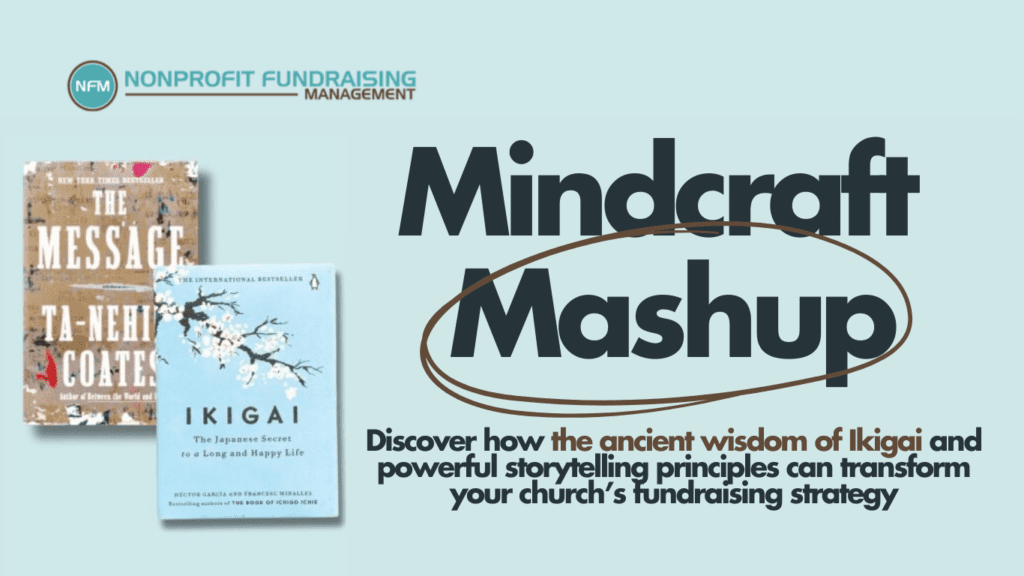
What if the key to your ministry’s financial growth isn’t just in the programs you offer, but in how deeply you understand and live out your purpose? Let’s get real—your church’s mission might be strong, but if it’s not connecting with your congregation and community, it’s like planting seeds in dry soil. No matter how much you water, nothing grows.
The Problem: Misalignment Between Purpose and Practice
Many churches feel stuck. You’re working hard, but the financial struggles remain. Your congregation might be shrinking, and donations are drying up because people don’t feel connected to your story—or worse, they don’t know it at all.
When your church’s purpose isn’t crystal clear and woven into everything you do, your mission can get lost in the noise. People need to see exactly where they fit into the bigger picture and how their support drives change.
Step 1: Refining Your Purpose by Reclaiming Your Story
Ta-Nehisi Coates emphasizes that storytelling reclaims identity and strengthens community. In the same way, your church’s story can breathe life into your ministry.
Example: A church discovered a large number of single mothers in their community. By tailoring mentorship programs for these moms, the church became a support hub, attracting new families and revitalizing their congregation.
Action Step: Take a hard look at your ministry’s story. Does it reflect your community’s current needs? Update it and share it consistently, from sermons to social media posts.
Step 2: Building Resilience Through Small, Purpose-Driven Actions
In Ikigai, small, intentional actions—what the Okinawans call “flow”—lead to lasting progress. Resilience isn’t built overnight—it’s forged by consistent effort.
Example: A church aimed to expand their food ministry and set a goal to increase fundraising by 25% in three months. They broke this goal into small weekly actions: hosting mini-events, reaching out to new donors, and posting updates online. The result? Not only did they hit their goal, but their ministry grew stronger because their congregation saw the effort and rallied behind them.
Action Step: Pick one area to grow—maybe it’s expanding outreach or improving your community programs. Create small, actionable goals and track your wins.
Step 3: Mobilizing Networks to Multiply Impact
In Okinawan culture, moai—close-knit support groups—amplify efforts through collaboration. Coates also illustrates how shared narratives bring people together to drive change.
Example: Imagine hosting “friend-raisers” instead of fundraisers—events that build connections and spark ideas for collaboration. One church that did this doubled their donor base by turning their focus to storytelling and connection over financial asks.
Action Step: Host a small event that prioritizes relationships over donations. Whether it’s a dinner or a storytelling night, make it about building shared purpose. You’ll be surprised at how many people will want to invest when they feel like part of the vision.
Step 4: Understanding the Injustice Connection
Coates argues that injustices are interconnected—addressing one strengthens the fight against all. Your ministry’s impact is bigger than you think.
Example: A church funding scholarships framed their initiative as part of a broader fight for educational equity. Donors saw their contributions not just as financial gifts, but as acts of justice. The result? A surge in support because donors felt their impact extended beyond church walls.
Action Step: Reframe your messaging. Don’t just say, “We’re feeding families.” Show how you’re dismantling systemic problems like food insecurity.
Step 5: Legacy Giving: Turning Purpose into a Movement
People want their lives to matter beyond their lifetime. Ikigai teaches that fulfillment comes from contributing to something bigger than yourself. Coates adds that people are inspired when they see their role in a larger story.
Action Step: Introduce legacy giving as a way for your congregation to leave a lasting impact. Whether it’s an endowment or planned giving, frame it as an invitation to be part of a story that will live on for generations.
Reflect and Act
Ask yourself:
- Does your congregation know your church’s true story?
- Are you setting small, purpose-driven goals to build resilience?
- How are you engaging your networks to amplify your ministry’s reach?
If your answer to any of these is “no” or “not sure,” don’t stress—start small. You don’t need to overhaul everything overnight.
Ready to see these ideas in action? Watch our full video, where CEO Paul Hosch breaks down these steps with real examples from ministries just like yours.
It’s time to move beyond surviving and step into thriving. Watch the video, take notes, and start implementing these strategies today. Your ministry’s purpose deserves to shine—and with the right tools, it will.
